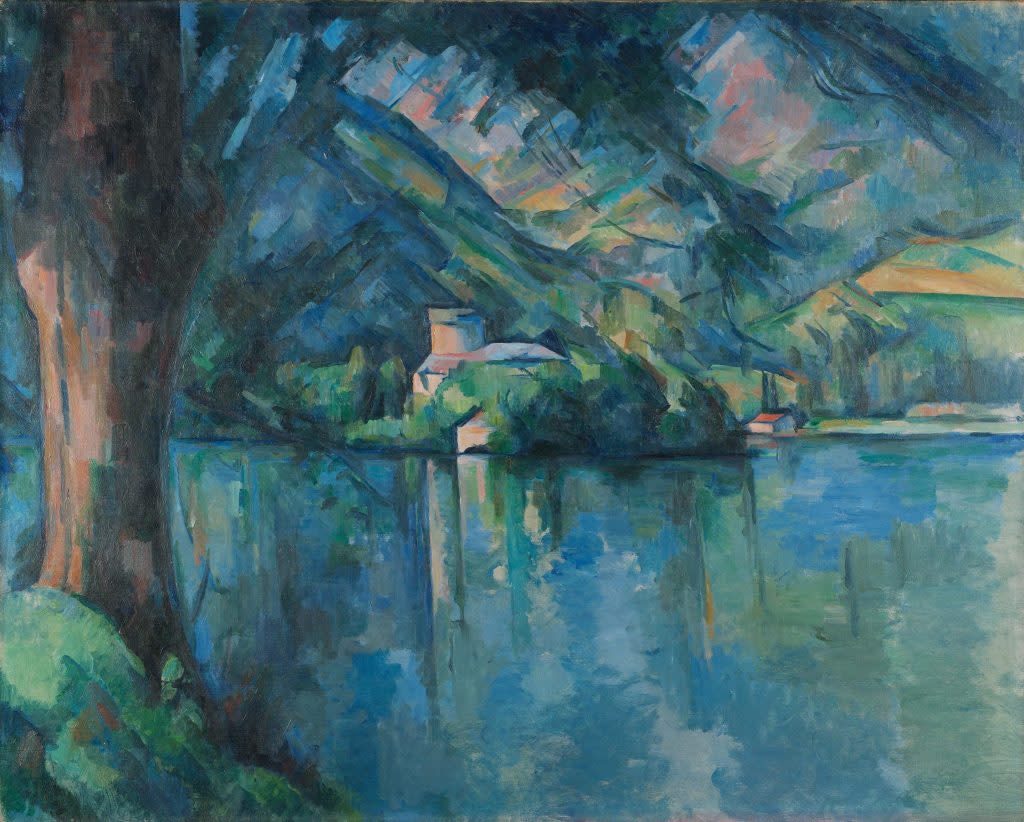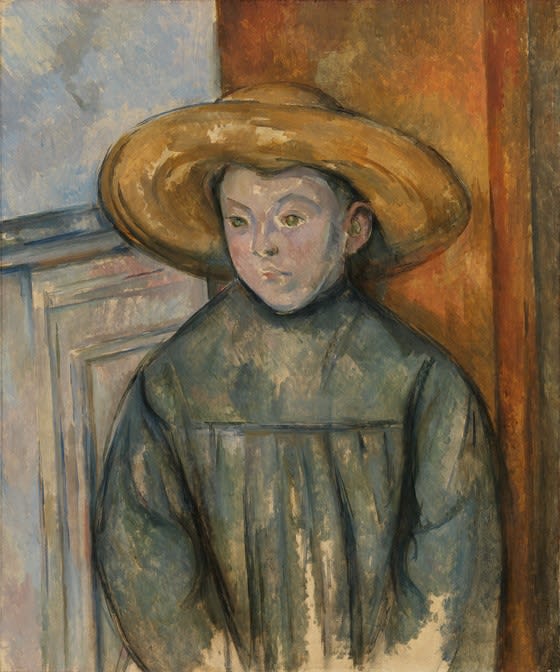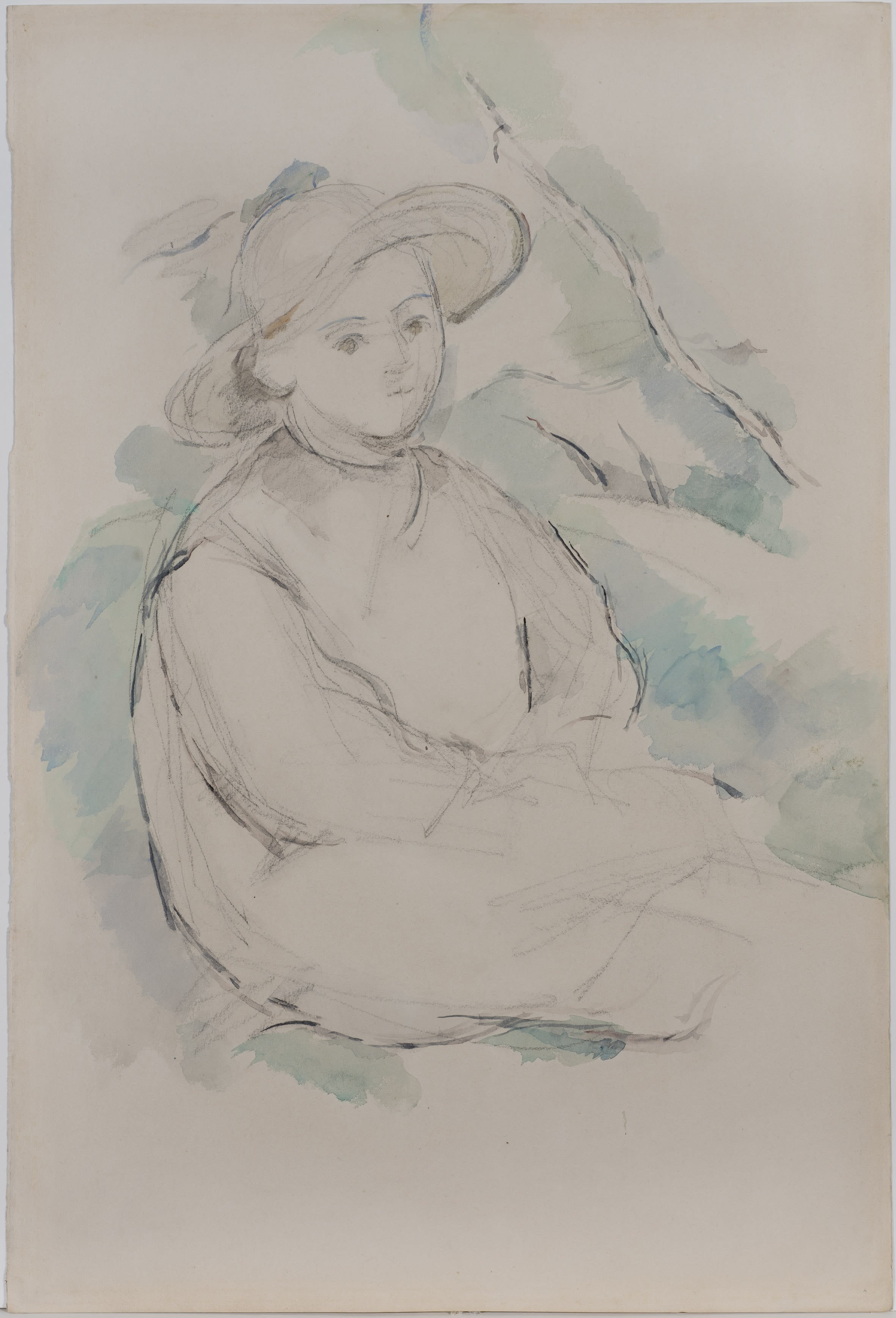In The Spotlight
Paul Cézanne’s summer at Lac d’Annecy | July-August 1896

Hôtel de l’Abbaye de Talloires
“I am staying in the Hôtel de l’Abbaye. What a superb relic of ancient times; a flight of steps five meters wide, a staggering entrance, an interior courtyard with columns forming a gallery all around; you go up to the grand staircase, the rooms open onto an immense corridor, the whole thing very monastic… To relieve my boredom, I am painting”
Paul Cézanne to Philippe Solari, 23 July 1896
In July-August 1896 Cézanne holidayed at Hôtel de l’Abbaye de Talloires on Lac d’Annecy near Geneva with his wife Hortense and fourteen year old son, Paul. By this point in his career he had achieved some success. His work had been accepted into the 1882 Paris Salon and by the late 1890s he was receiving favourable reviews from such critics as Gustav Geoffrey (whose portrait by Cézanne now hangs in the Musée d’Orsay). Then in 1895, Cézanne had the first of three solo exhibitions with Ambroise Vollard the pre-eminent dealer who supported the careers of Gauguin, Renoir and Picasso among many others.
Cézanne divided his time between Aix-en-Provence and Paris. He is only known to have left France twice, both times to holiday in Switzerland: once to Jura in 1890 and again six years later to Talloires. He seemingly decided to venture from his hometown in 1896 under the persuasion of his wife who he described as “only likes Switzerland and lemonade”.
Describing Talloires to Joachim Gasquet on 21 July 1896 Cezanne was less than enthusiastic:
“Here I am, far from our Provence for a while. After much toing and froing, my family, in whose hands I find myself for the moment, have persuaded me to stay put in this spot, for the time being… It’s still nature, certainly, but rather as we have learned to see it in the travel albums of young ladies”.

Paul Cézanne, Lac d’Annecy, 1896, Oil on canvas, The Courtauld Gallery, London
Cézanne was clearly dubious about the conventional bourgeois tradition of spending the summer away in a landscape that was akin to “the travel albums of young ladies”. Although initially dismissive of his surroundings Cézanne created a number of fine works during this period, including the tremendous painting Lac d’Annecy (The Courtauld Gallery, London).


(left) Paul Cézanne, L’Enfant au Chapeau de Paille, 1896, Oil on canvas, Los Angeles County Museum of Art
(right) Paul Cézanne, L’Enfant au Chapeau de Paille / Bords du Lac d’Annecy (verso), 1896, watercolour and pencil on paper, Connaught Brown, London
Many of the sketches from this summer remain unfinished. Cézanne's rooms at Hôtel de l’Abbaye de Talloires are thought to be former monks’ cells which neither faced the lake nor provided comfortable working conditions. However, two works he did complete are the painting L’Enfant au Chapeau de Paille, now in the Los Angeles County Museum of Art and the watercolour L’Enfant au Chapeau de Paille belonging to Connaught Brown. These pieces are part of a group of paintings, watercolours and drawings that Cézanne created depicting a young boy wearing a straw hat. Although the boy’s identity is not officially known he is widely regarded to be the son of Monsieur Vallet, one of the hotel gardeners.
Growing restless, Cézanne decided to leave for Paris with his family in September 1896, first staying in Montmatre before moving to 73 rue Saint-Lazare. Weakened by his diabetes, he found the winter in Paris hard and was back in Aix by June 1897.

